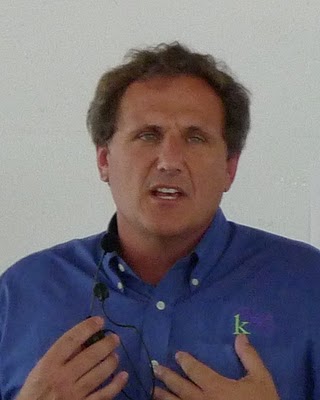Does your school superintendent get paid $5 million a year? Ronald J. Packard, CEO of K12 Inc., the second biggest donor to the pro-charter school amendment campaign, does. Is that where you want your tax dollars to go?
According to Bloomberg Businessweek,
Executive Profile,
Ronald J. Packard CFA,
Founder, Chief Executive Officer and Director, K12, Inc.
 K12 CEO Packard made $551,539 in salary in 2011,
but was awarded other compensation totaling $5,002,933.
Which is even richer than the
approximately $3,266,387 total compensation
private prison company CCA’s CEO Damon Hininger got in 2010,
which, according to Bloomberg Businessweek, apparently only went up to
3,696,798 in 2011.
K12 CEO Packard made $551,539 in salary in 2011,
but was awarded other compensation totaling $5,002,933.
Which is even richer than the
approximately $3,266,387 total compensation
private prison company CCA’s CEO Damon Hininger got in 2010,
which, according to Bloomberg Businessweek, apparently only went up to
3,696,798 in 2011.
According to Emma Brown for the Washington Post 9 December 2011, K12 Inc. chief executive Ron Packard paid $5 million compensation package in 2011,
That’s nearly twice the $2.67 million Packard earned in 2010. It includes $551,000 in cash, $4.2 million in stock awards and about $290,000 in other compensation.
Packard’s pay reflects a new employment agreement negotiated in September 2010 and good until 2014. The company had $522 million in revenue in 2011, up nearly 36 percent percent from the year before.
“We determined that these awards were necessary and appropriate to retain Mr. Packard as our Chief Executive Officer and in recognition of Mr. Packard’s leadership and performance over the term of his employment with the Company,” the filing said.
Do we want our tax revenue going to retain K12 Inc.’s CEO? What if we retain our local schools instead? After all, it’s dubious that charter schools would be any better than the public schools we already have.
K12 Inc. is the country’s largest operator of full-time public virtual schools, in which students learn at home via computer. The model is championed by some lawmakers, families and school-choice advocates, but has also come under increasing fire by critics who say it is an ineffective way to educate kids and a bad deal for taxpayers footing the bill.
Also, pay inside K12 Inc. is being concentrated towards one man.
The company’s amended filing also lists compensation for other top executives. They did not receive base-salary increases, the filing said, “despite their excellent performance, in order to maintain an efficient cost structure in an uncertain economic environment.”
Chief financial officer Harry T. Hawks earned about $544,000 — significantly less than his 2010 package, which was worth $1.8 million.
Do you want your tax dollars going to enrich one man? If not, vote No on the charter school amendment in November.
-jsq
Short Link:
Keep in mind that this company is based in Virginia, so our tax dollars from say, South Georgia meant for our school teachers, administraters, supplies, and educating our students, would go to bolster the economy in Virginia and line the pockets of the very rich. Meanwhile we have to raise taxes to simply educate the students attending our public schools. This is clearly NOT a plan to ‘improve academic achievement’ as the preamble boldly lies.
The preamble is boldly inaccurate and completely biased. The wording added to the question on the ballot implies that the amendment would improve student achievement and parent involvement. My stars, what breathing individual doesn’t want those things.
Facts are that by some measures charter schools perform 3% worse than traditional public schools. We would hope that schools where parents have to sign a commitment of parent involvement would have superior parent involvement. Might I just add that students can be kicked out of charter schools and all students are educated in the Traditional Public School setting as per our Georgia constitution.
The ‘biased and inaccurate’ wording in the preamble to the charter schools question is not found in HB 1162, the law that allowed this question to be placed on the ballot. It is not in HB 797, the law thaw would be enacted should the amendment pass. NO the wording that is on the preamble comes straight out of ALEC documents, which are the equivalent of ‘legislation for Dummies’ with a particular slant as you might imagine.